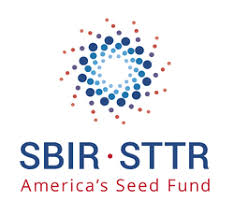- Solutions
- Partners
- Resources
- Blog
- GovCon Source
- GovCon Source Home
- Lean & Agile in the Age of DOGE
- Service Contract Act (SCA)
- DCAA Compliant Accounting
- GovCon Outsourcing & Managed Services
- Government ERP Systems
- Veteran-Owned Small Businesses
- GovCon CyberSecurity
- Graduating 8(a) Program
- SBIRs & Grants
- GovCon Growth Strategies
- GovCon Compliance Audits
- Webinars
- DCAA Compliance
- GovCon Accounting
- Graduating 8(a) Program
- Service Contract Act (SCA)
- GovCon Managed Services
- Government ERP Systems
- GovCon Reviews & Audits
- Cybersecurity Compliance
- Government Grants & Contracts
- Company
December 20, 2023
Key Differences Between SBIR Grants and Other Government R&D Funding Programs
Written by: Ron Lewis
Self-Assessment Checklist
Answer a few questions to see if you are correctly and efficiently handling your SBIR grants and contracts.
 Page Summary
Page Summary
SBIR grants are unique government funding program exclusively for small businesses, featuring a three-phase structure, strong commercialization emphasis, larger funding amounts, competitive selection, favorable IP rights, agency-specific focus, and minimal matching fund requirements, setting it apart from other government R&D funding programs. Small businesses should review program specifics to find the best fit for their R&D needs.
 The Small Business Innovation Research (SBIR) program is a specific government funding program designed to support small businesses in conducting research and development (R&D) activities. While there are other government R&D funding programs, SBIR grants have unique characteristics and key differences that set it apart.
The Small Business Innovation Research (SBIR) program is a specific government funding program designed to support small businesses in conducting research and development (R&D) activities. While there are other government R&D funding programs, SBIR grants have unique characteristics and key differences that set it apart.
Key Differences Between SBIR Grants and Other Government Funding
-
Targeted at Small Businesses
SBIR grants are exclusively aimed at small businesses, whereas other government R&D funding programs may have a broader range of eligible applicants, including large corporations, universities, and nonprofit organizations. -
Three-Phase Structure
The SBIR program consists of two phases (Phase I, Phase II, and Phase III), with Phase II specifically focused on the development of prototypes or products resulting from the Phase I research. Other programs may not have a structured two-phase approach. -
Commercialization Emphasis
In Phase III, the SBIR program places a strong emphasis on the commercialization of research outcomes. Small businesses are expected to demonstrate a clear path to market commercialization for the technologies or products they develop.
Learn More about SBIR Commercialization -
Award Amount and Duration
SBIR grants typically offers larger funding amounts and longer project durations compared to Phase I. The exact funding amount and duration can vary by agency and topic, but Phase II generally provides more substantial support for development efforts. -
Competitive Process
SBIR awards are typically granted through a competitive process, with applicants required to submit proposals that are evaluated based on technical merit, commercial potential, and other criteria. Other government R&D funding programs may have different application and selection processes. -
Intellectual Property (IP) Rights
 SBIR awards often includes provisions regarding IP rights that are favorable to small businesses, allowing them to retain ownership of the technology developed during the project. Other programs may have different IP policies.
SBIR awards often includes provisions regarding IP rights that are favorable to small businesses, allowing them to retain ownership of the technology developed during the project. Other programs may have different IP policies. -
Agency-Specific Focus
Different government agencies administer SBIR programs, and each agency may have specific focus areas and priorities. Other government R&D funding programs may align with the priorities and missions of the administering agency, but they can have different scopes and objectives. -
Matching Funds and Partnerships
Some other government R&D funding programs may require matching funds from the recipient or encourage collaborations with other organizations, such as universities or research institutions. SBIR grants typically do not require matching funds, although partnerships may still be beneficial. -
Reporting and Compliance
SBIR grant recipients are often required to meet specific reporting and compliance requirements to demonstrate progress and outcomes. Other government R&D programs may have similar or different reporting and compliance expectations.
It's important to note that the specifics of SBIR grants and other government R&D funding programs can vary widely depending on the agency, the topic, and the current program guidelines. Small businesses seeking government R&D funding should carefully review the requirements and priorities of each program to determine the best fit for their research and development needs.
Are There Additional Funding Opportunities Beyond SBIR Phase II?
How Can I Commercialize Technology Developed with SBIR Grants?
Other posts you might be interested in
View All Posts
12 min read
| October 15, 2025
AtWork & Paychex: Simplifying Business Operations Together
Read More
5 min read
| August 5, 2025
Now Is the Time to Replace QuickBooks, Unanet, and Deltek
Read More
4 min read
| August 4, 2025
